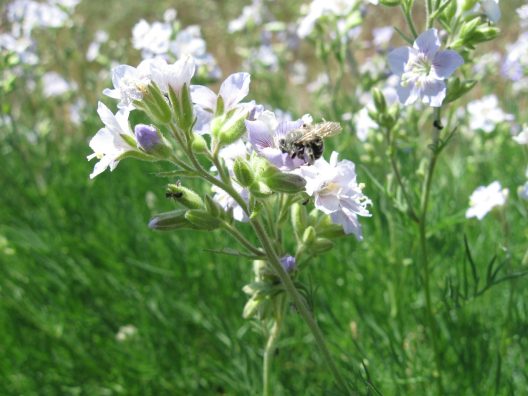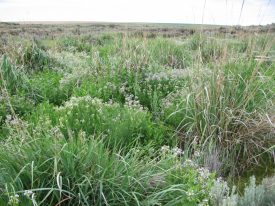Plant Spotlight: Washington Polemonium

Washington polemonium (Polemonium pectinatum) is a distinctive perennial Washington endemic. As the Latin name implies, its leaves are pectinate, a term that describes its feathery, pinnately compound leaves that have 11-17 narrow leaflets. These unique leaves make this species stand out amongst other members of the genus in Washington. In mid-May to early June, its branched inflorescence blooms with light blue to lavender flowers that sometimes have faint maroon veins.

Washington polemonium is known from 39 extant occurrences found across a 110- by 50-mile area of eastern Washington’s scablands.The scablands were formed during the last ice age when an enormous lake that covered parts of Montana broke the ice barrier damming it, rapidly releasing the lake’s 500 cubic miles of water. This water flooded over a vast swath of central and eastern Washington and drained through the Wallula Gap just south of the current confluence of the Walla Walla and Columbia Rivers. The flood scoured soil away and exposed basalt bedrock in a web of intertwining channels that became canyons called coulees. This area is called the scablands. Today, Washington polemonium inhabits the coulee floors in seasonally moist riparian areas and depressions within the shrub steppe ecosystem that dominates the upland areas. Its extent has been reduced due to farming, grazing, changes in hydrology, and the expansion of invasive species. A satellite image of this species’ current distribution shows the plant is limited to coulees and streams between densely packed tiles of green, gold, and tan circular farmed fields.
Twenty-one of the 39 known occurrences are on private land, most of which have not been resurveyed in over 30 years. It is currently ranked as a state Threatened and Bureau of Land Management sensitive species. The Washington Natural Heritage Program in 2020 reported that more information about this species’ abundance and population trends is needed. To this end, Rare Care has focused on re-monitoring all known occurrences on public land in order to better understand the trends for this species and inform an accurate ranking by federal and state agencies.